ABSTRACT
A shortage of skilled craft labor in the North American construction industry has been an unfortunate cyclic trend since the late 1980s. This shortage has been reported and discussed frequently by numerous past studies in the context of construction industry. The 2008 U.S. recession was at least one period when the craft shortage temporarily improved, as witnessed by spikes in construction unemployment rates above 20% due to the work slowdowns. However, the current economic recovery period is once again experiencing craft shortages in some sectors of the U.S. construction industry.
Although the past literature provides wealth of information about influence of craft labor shortage on construction project, less attention has been given to quantifying the impact of craft labor availability on construction project performance. The primary contribution of this study to the body of knowledge is to fill the gap in existing literature by quantitatively modelling and elucidating the influence of craft labor availability on construction project performance as measured by safety, schedule, productivity and cost.
Data from 97 construction projects completed in the U.S. and Canada between 2001 and 2014 were collected from two data sources. A number of t-tests and regression analyses were conducted in both databases to examine the significance of the influence of craft labor shortage on construction project performance. The primary analysis shows that projects that experienced craft shortages underwent significant higher growth in cost overrun, time overrun, safety incident and also lower productivity compared to projects that did not.
Further analysis on two databases returned the following models: 1) a Poisson regression model that demonstrates a positive exponential relationship between increased craft worker recruiting difficulty and Occupational Safety and Health Administration (OSHA) Total Number of Recordable Incident Cases per 200,000 Actual Direct Work Hours (TRIR) on construction projects. 2) a statistically significant correlation between increased craft recruiting difficulty and lower project productivity and higher schedule overruns 3) a multiple regression models that demonstrate a relationship between increased construction cost overrun with two variables of increased actual cost and increased craft staffing difficulty. These models are intended to be used by project management team to perceive the risk that skilled craft labor variability poses on project safety, productivity, time, and cost performance. In addition, understanding the level of impact that craft shortages are having through robust statistical analyses is a first step in developing the motivation for industry leaders, communities, and construction stakeholders to address this challenge.
QUANTITATIVE ANALYSIS OF THE IMPACT OF CRAFT WORKER AVAILABILITY ON CONSTRUCTION PROJECT SAFETY PERFORMANCE
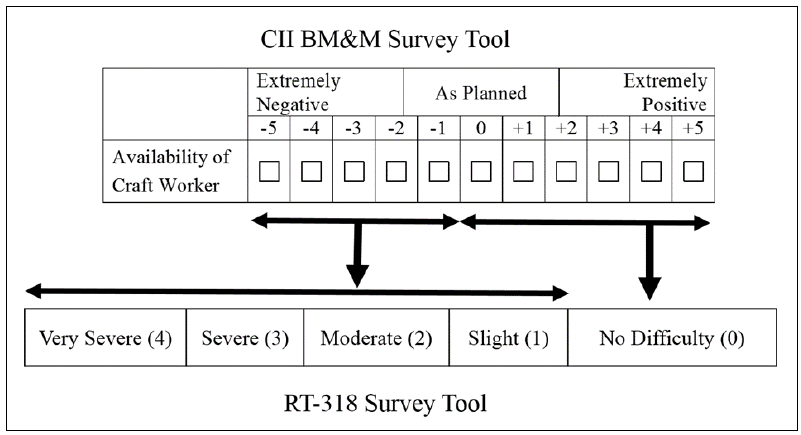
Figure 2.1. Process of converting the BM&M scale of availability of craft workers to RT-318 survey scale.
were only six projects among a total of 50 projects used for analysis that had scores of more than zero. The scores between -5 (Extremely Negative) to -1 in the CII BM&M were also scaled proportionally to the number between 1 (Slight) to 4 (Very Severe), as defined in the RT-318 survey. This can be done by multiplying any score between -1 and -5 by -4/5. Fig. 2.1 illustrates the whole scale conversion process.

Figure 2. Poisson regression model of TRIR and Craft Worker Recruiting Difficulty.
The P-value of the model affirms its adequacy in demonstrating the association between two variables (P-value = 0.0044). The intercept parameter is also statistically significant at the 0.0001 level. Fig.2 shows the graph of the model which illustrates the exponential relationship between the craft worker recruiting difficulty and TRIR.
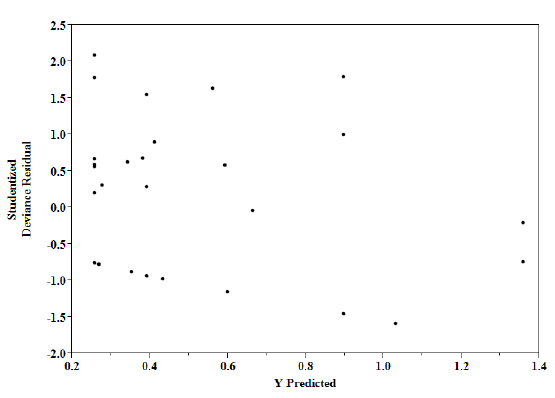
Figure 2.3. Studentized Deviance Residual vs. Predicted TRIR.
Examining residuals of the model can be useful to identify where the Generalized Linear Model is fitted poorly and where unusual observation occurs (Agresti, 2015). The plot of Studentized Deviance Residual versus Predicted Response Variable (Y) is illustrated in Fig.3. The plot shows no pattern and all points are scattered randomly around the zero line. Moreover, there is no unusual observation in the residuals which indicates that there is no outlier in the dataset.
ANALYSIS OF THE IMPACT OF CRAFT LABOR AVAILABILITY ON NORTH AMERICAN CONSTRUCTION PROJECT PRODUCTIVITY AND SCHEDULE PERFORMANCE
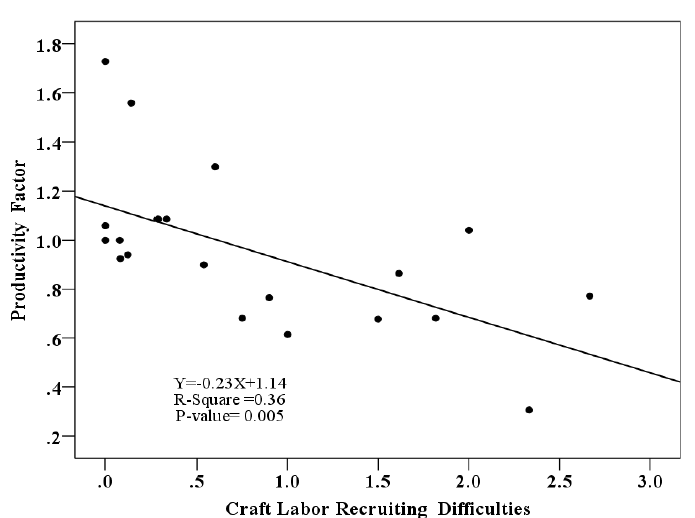
Fig. 3.1. Regression analysis of the Craft labor recruiting difficulty and Productivity Factor (RT-318 database).
The first regression analysis was performed to examine the relationship between craft recruiting difficulty and project productivity. The total number of projects in this analysis was 20 projects. The analysis shows the linear association between increased craft recruiting difficulty and a decreased productivity factor. The p value of 0.005 resulted in rejection of the null hypothesis and conclusion that there was a significant influence of craft labor shortage on project labor productivity. The R2 value of the equation is 0.36. Fig. 3.1 shows the regression model.
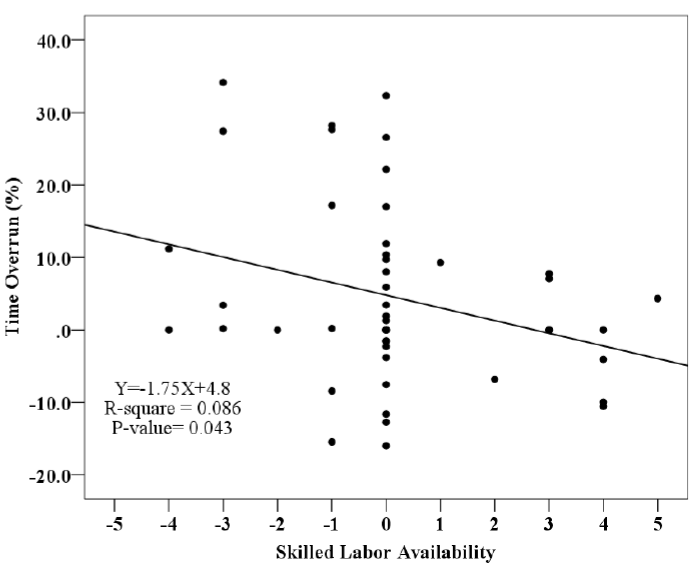
Fig. 3.4. Regression analysis of the Skilled Labor Availability and Time Overrun (CII BM&M database).
The p-value of 0.043 resulted in rejection of the null hypothesis and the conclusion that skilled labor availability is associated with time overrun. However, the low R2 value of 0.09 indicated that this variable can only explain about 9% of time overrun variation in these set of projects. In subsequent analysis, the authors sought to explain this statistically significant but relatively weak influential relationship. The model can be observed in Fig. 3.4.
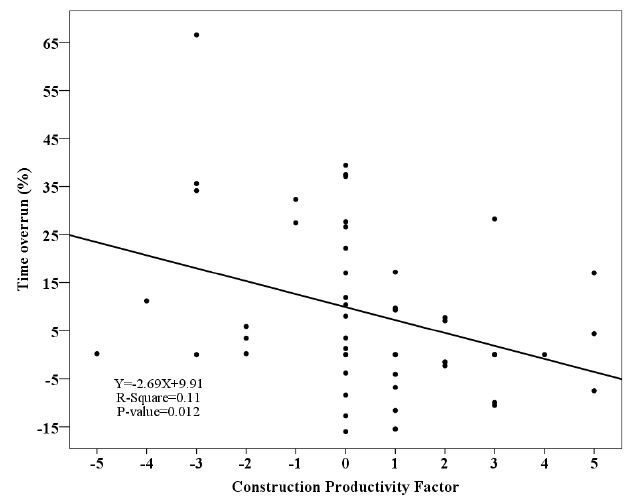
Fig. 3.7. Regression analysis of the Construction Productivity Factor and Time Overrun (CII BM&M database).
In the CII BM&M database, the total number of available data points was 58. After detecting and removing 3 outliers, it reduced to 55. The regression analysis shows the lower productivity would result in higher time overrun. The p-value of 0.012 resulted in rejection of null hypothesis. The R2 value of the equation was 0.11. The analysis shows the statistically significant but relatively weak relationship between productivity and time overturn. The model can be observed in Fig.3.7.
MODELING AND FORECASTING THE IMPACT OF CRAFT LABOR AVAILABILITY ON CONSTRUCTION PROJECT COST PERFORMANCE
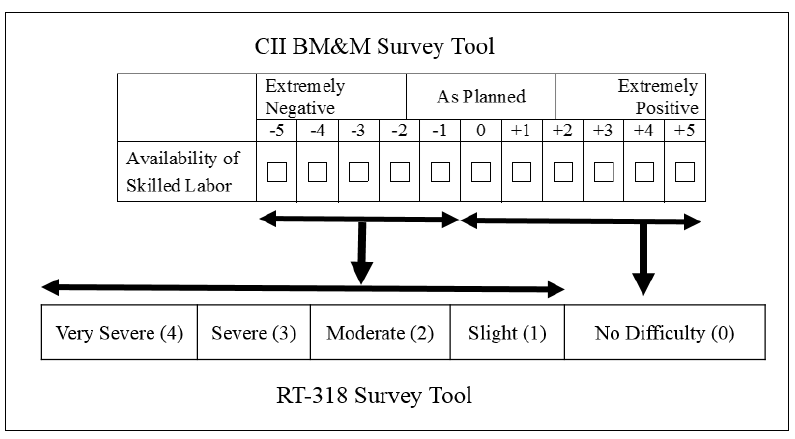
Figure 4.1. Process of converting the BM&M scale of availability of craft workers to RT-318 survey’s scale.
As discussed earlier, this conversion assumed that projects with scores in this range were not impacted by a shortage of craft workers. However, there were only 17 projects among the total of 68 projects that has score more than zero. The scores between -5 (Extremely Negative) to -1 in the CII BM&M also were scaled proportionally to the number between 1 (Slight) to 4 (Very Severe), as defined in the RT- 318 survey. This can be done by multiplying any score between -1 and -5 by -4/5. Fig. 1 illustrates the whole scale conversion process.
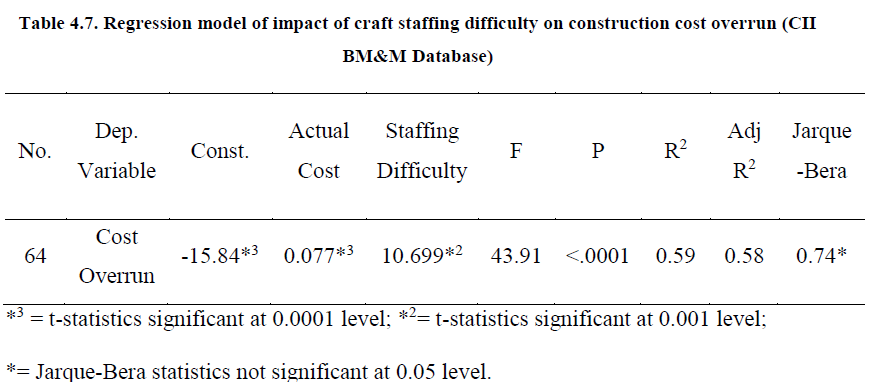
The total available data points for this analysis was 64. The analysis returned the regression model contains both two aforementioned variables. The p-value of the model was less than 0.0001, which indicates the adequacy of the model. The R2 value of the model is 0.59 with an adjusted R2 of 0.58. Table 7 shows the detail of statistical analysis of the model.
CONCLUSION AND RECOMMENDATION
This research aimed to identify the influence of craft workers variability on specific construction project performance of safety, schedule, productivity and cost. The main objectives of the study were defined as follows:
- Identify whether there is a significant difference in performance parameters of projects that reported a craft worker shortage versus those that did not.
- Determine whether there is significant association between craft worker recruiting difficulty and performance parameters in projects. 3.
- Develop models that quantifiably links project craft worker variability to project performance parameters.
The paper No.1 presented in Chapter 2, achieves objectives 1-3 by examining the project safety performance parameter (TRIR) through several statistical analyses. The Poisson regression model demonstrates the significant relationship between increased craft recruiting difficulty and increased TRIR. The model is the first model that quantifiably links project craft worker availability to construction project safety performance.
The paper No.2 presented in Chapter 3 demonstrates that project productivity declines substantially when there is a shortage of craft labor. It shows that project managers tend to compensate its impact on project schedule using more overtime. However, the study demonstrates that even with the usage of more overtime, the impact of craft shortage on project schedule is considerable and cannot be eliminated completely. The paper achieves objective 1-3 as defined before, however due to the relatively low R2 value in simple regression models presented in this study, the models are considered as informative rather than predictive models.
Source: University of Kentucky
Authors: Hossein Karimi